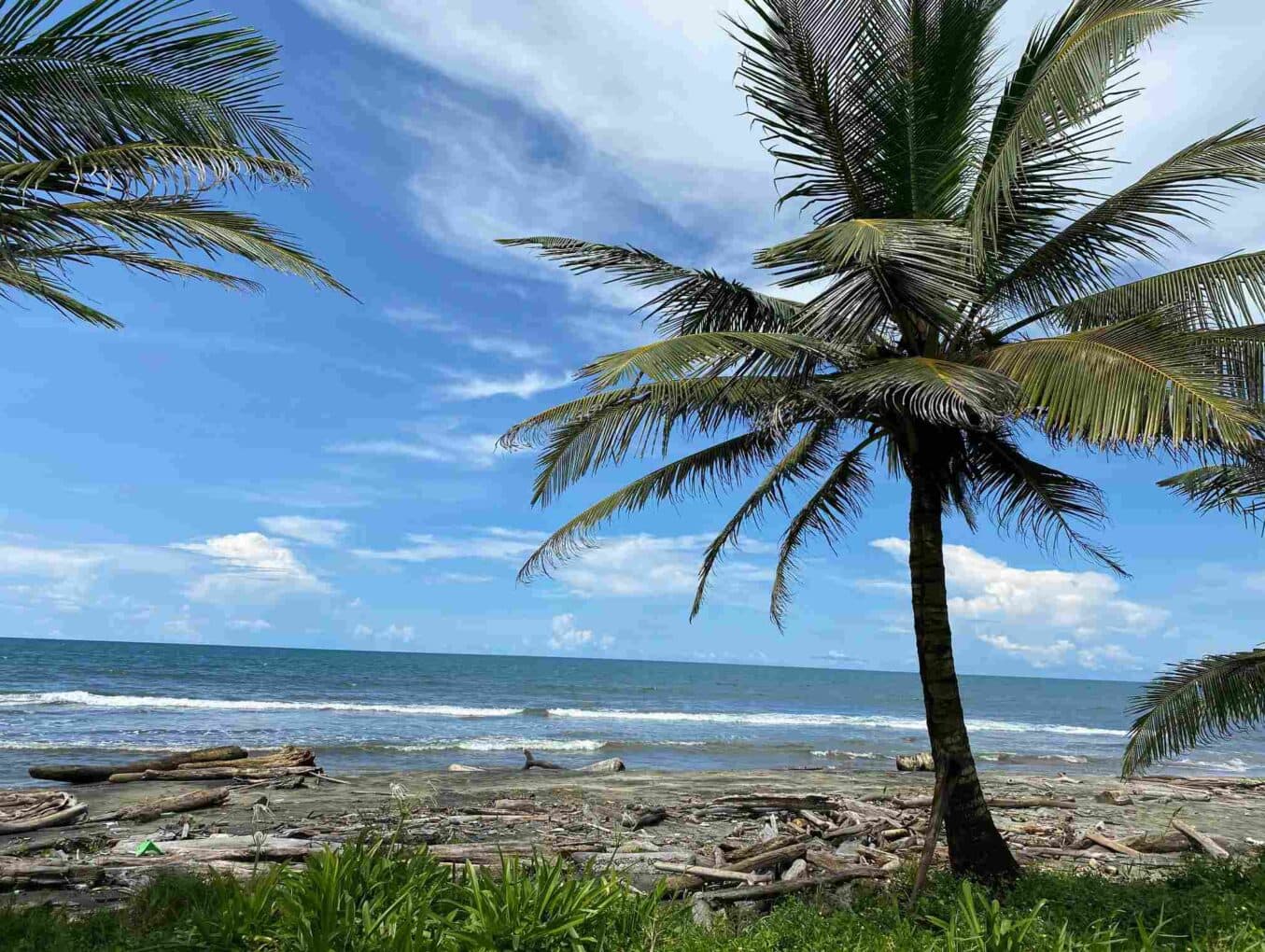After crossing the waters of the Panama Canal through the new bridge that is in the Atlantic sector, you are officially in Costa Abajo de Colón. Before reaching any town on the coast, you have to skirt the protective forest of San Lorenzo. San Lorenzo Protected Forest This protected forest also works as a natural barrier for some areas of the canal and the San Lorenzo Fort, a colonial fortress built in Spanish colonial times to protect the mouth of the Chagres River, located on the other side of the barrier. Once part of the Gatun locks is skirted by road, the road to the coastal towns begins. A Coastal Trip to Enjoy To get to the coastal communities, you go along a unique coastal highway in the country and little traveled by both Panamanians and foreigners. After an hour on the way, you can see the majesty and natural beauty of the Caribbean Sea. On the coast there are communities where thousands of Panamanians from different parts of the country live, as well as from different ethnic groups. The highway passes through the coastal communities of Achiote, Icacal, Palmas Bellas, Salud, Gobea, Piñas, Río Indio and Miguel de la Borda. Along the road that runs parallel to the sea, it can be seen that the palm trees receive the blows of the strong winds from the coast. A totally different region to Costa Arriba de Colón where the waters are normally calm, however, Costa Abajo is located offshore which makes the waves of the sea stronger. The breeze, the sound of the sea and the vegetation clearly show that urban development has not reached this sector of the province of Colón to a great extent. Nature that Surprises Here, nature surprises, since one of the first places that the Visitor finds himself and can have contact with the sea is in Palmas Bella, where there is a small natural pool that is made on the coast, a perfect place to sit and enjoy the sway of the water In the town of Achiote, there is the El Tucán Center, where excursions are carried out that go into the San Lorenzo National Park, as well as a beautiful beach to enjoy. On these beaches, you live more with the locals, who enjoy the paradise that surrounds them to the fullest. Following the road you pass the town of Icacal and just before reaching Palmas Bellas there is a beautiful beach to enjoy. This beautiful coastal town has about 2,000 inhabitants, mostly descendants of the ancient community of Chagres. Following the coastal road, you pass through the towns of Salud, Gobea and Piñas, until you reach Río Indio, a place where a river and the coast converge. This mix is perfect for locals who enjoy bathing in a place where the waters are calm in the middle of the town, postcards from a different Panama. The Last Seaside Town After almost two and a half hours of travel from Panama City, the last coastal town is reached, here the highway ends. Miguel de la Borda is the last town to which the highway that runs along the Costa Abajo de Colón leads. The town has approximately 3,000 inhabitants. It is mostly inhabited by people of Negroid and indigenous descent, who are engaged in subsistence agriculture and artisanal fishing. The latter is carried out both in the sea and in the river from which it takes its name from the town. In this town is one of the most extensive, beautiful and quiet beaches of Costa Abajo. A place that has nothing to envy to beaches in other sectors of the country. Among the activities that can be done is touring the town, going to the beach, taking boat tours along the coast and even upriver to inland towns, resting in a hammock among the palm trees or making bonfires on the beach. Costa Abajo de Colón is a diamond that only has to be polished to make it shine in sustainable tourism, with services that promote local culture and infrastructure that is in keeping with the nature found in this paradise. For now, there is only one place to stay in Miguel de la Borda, but in the towns you can enjoy several restaurants where you can taste the local gastronomy. An unforgettable road trip that motivates you to return again and again.







